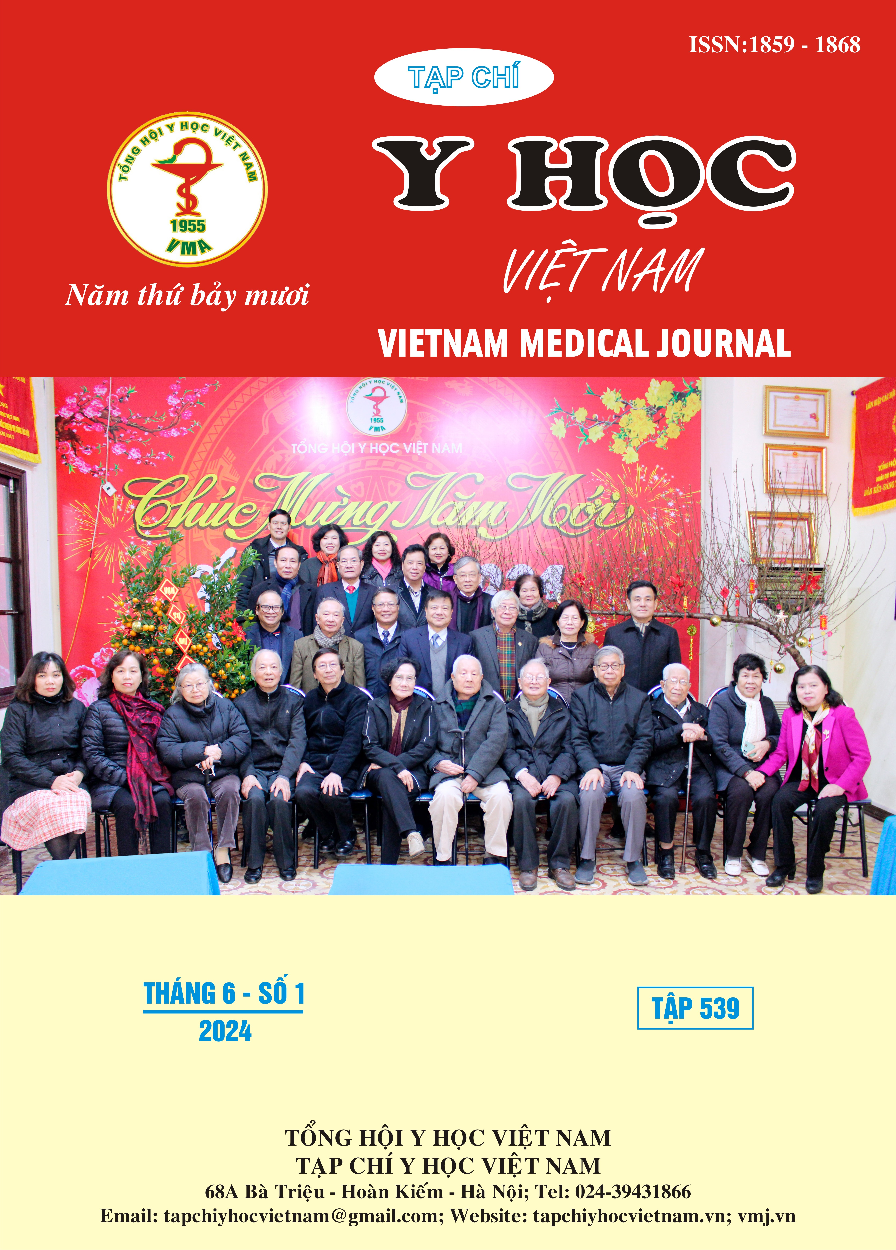PREVALENCE OF HUMAN PAPILLOMAVIRUS INFECTION AT THE NATIONAL HOSPITAL OF DERMATOLOGY AND VENEREOLOGY IN 2023
Main Article Content
Abstract
common sexually transmitted infection worldwide and poses a significant risk for various cancers in both genders. Methods: This cross-sectional aims to assess the infection rate, HPV type distribution, and associated factors by using real-time PCR techniques on genital samples from patients attending the National hospital of Dermatology and Venereology. Results: Among 1,646 patients tested, 84.7% were positive for HPV, with 40.8% exhibiting a single infection and 59.2% displaying multiple HPV infections. Women accounted for 48.2%, and men for 51.8% of positive cases, with the highest infection rate observed in the 40-49 age group (90.7%). Men showed a higher likelihood of HPV single infection (OR=1.26; 95% CI: 1.02-1.56; p=0.035), while women exhibited a greater propensity for multiple HPV infections (OR=0.80; 95% CI: 0.64-0.98; p=0.035). Geographically, patients from Hanoi exhibited the highest infection rate (56%), followed by the North (39.5%), and the South and Central regions (4.5%). Conclusions: Research findings indicate a high prevalence of HPV infection among patients attending the National hospital of Dermatology and Venereology. Additionally, the research underscores the significance of regular HPV testing as a measure to mitigate the incidence of HPV infection. Keywords: HPV, single infection, multiple infection, National hospital of Dermatology and Venereology.
Article Details
Keywords
HPV, đơn nhiễm, đa nhiễm, bệnh viện Da liễu Trung ương.
References
2. de Martel, C., et al., Global burden of cancer attributable to infections in 2018: a worldwide incidence analysis. Lancet Glob Health, 2020. 8(2): p. e180-e190.
3. IARC Working Group on the Evaluation of Carcinogenic Risks to Humans, Biological agents. 2012. 100(Pt B): p. 1-441.
4. Kombe Kombe, A.J., et al., Epidemiology and Burden of Human Papillomavirus and Related Diseases, Molecular Pathogenesis, and Vaccine Evaluation. Front Public Health, 2020. 8: p. 552028.
5. Rezaee Azhar, I., et al., Prevalence of human papilloma virus (HPV) genotypes between outpatients males and females referred to seven laboratories in Tehran, Iran. Infect Agent Cancer, 2022. 17(1): p. 7.
6. World Health Organization (WHO). HPV LabNet newsletter No.8. World health Oraganization's global human papillomavirus's laboratory network. 2011; Available from: https://cdn.who.int/media/docs/default-source/ biologicals/vaccine-standardization/human-papillomavirus-(hpv)/hpv_labnet_newsletter_ 8.pdf.
7. World Health Organization (WHO). Cervical cancer. 2024 04 Apr 2024]; Available from: https://www.who.int/news-room/fact-sheets/detail/cervical-cancer.
8. Yi, J., et al., The impact of the COVID-19 pandemic on the prevalence and genotype distribution of HPV infection in Beijing, China. J Med Virol, 2023. 95(10): p. e29155.


